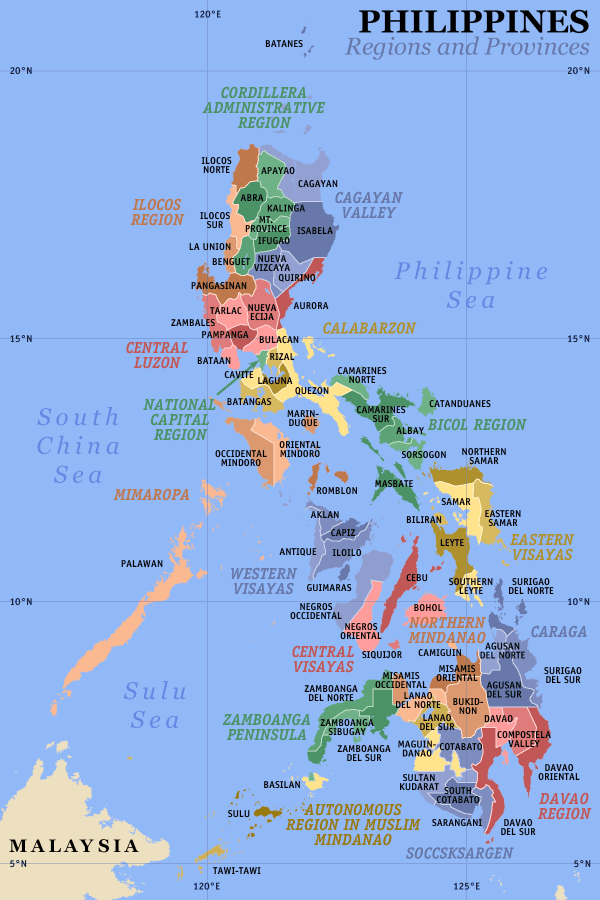|
Pearls in the Pacific
The First Asian Republic
 For almost three hundred years following the
capture of Manila in 1571, Spain controlled the
islands of the Philippines through religious
conversion, military suppression and economic
exploitation. Filipinos, led by Andres Bonifacio,
fought the colonial forces until the Spanish were finally
defeated in 1898. The Philippines was the
first republic in Asia and raised its national flag
for the first time on June 12th 1898. For almost three hundred years following the
capture of Manila in 1571, Spain controlled the
islands of the Philippines through religious
conversion, military suppression and economic
exploitation. Filipinos, led by Andres Bonifacio,
fought the colonial forces until the Spanish were finally
defeated in 1898. The Philippines was the
first republic in Asia and raised its national flag
for the first time on June 12th 1898.
Unfortunately, the first republic did not last
long. The United States, then an enemy of Spain,
annexed the Philippines under the Treaty of Paris in
1898. They had bought the islands from the
Spanish for $20 million dollars. Filipino freedom
fighters resisted this new colonial power, but the
Americans launched a brutal war of pacification
which claimed over a million Filipino lives.
America Takes Over
The Philippines adopted the American system of
government, with its executive, legislative, and judicial
branches, a president as head of state, and a bicameral Congress
composed of the Senate and a House of Representatives. The country's
two-party system was also similar to America's. The new
colonists influenced every aspect of Filipino life.
There was a new system of public education, with English
as the working language. Western-style
systems of commerce and business were introduced
and Western culture was reinforced through
literature, films, journalism, theatre, music, fashion
and food.
As America's colony, the Philippines was involved
in World War II. Filipino soldiers fought alongside
American forces against the Japanese Imperial
Army. The country became one of the bloodiest
battlefields of the war in the Pacific.
On July 4th 1946, the United States finally recognised
the Philippines' right to independence, and the country became a
republic for the second
time in its history.
The post-war years saw much social and political
instability. Filipino society was still feudal and run by an economic
and political elite. Nationalists claimed that America still influenced,
if not
controlled, the country's economy, internal politics,
and foreign policy. There were many economic and
social problems. As a result, there was a series of
Marxist uprisings in the 1960s and 1970s which led to the
declaration of martial law on September 21st 1972, by President
Ferdinand Marcos.
He ruled as a dictator until he was overthrown in
1986, when millions of Filipinos revolted against the
Marcos regime.
It became known as the People Power Revolution.
The first republic of Asia was finally back on the
road to democracy.
A Tiger Cub
The 20-year rule of President Marcos set the
Philippines economy so far back that the international
press called it "the sick man of Asia."
In recent years, the country appears to have bounced
back. Before the 1997 currency crisis and economic
downturn, which affected most of the Asian tiger
economies, the Philippines was set to become a
newly industrialising country, or NIC by the
year 2000.
The attainment of economic tiger status has been the main
plan of the Ramos administration since it
took office in 1992. President Fidel V. Ramos has
tried to modernise the country. His main objectives have
been "global competitiveness" and "people
empowerment". In recent years, exports have
increased as has the gross national product. There
has also been an increase in the per capita income.
Poverty, at the same time has decreased.
The President says that the Philippines has
reached a certain level of development without
sacrificing democratic institutions. Critics reply that
development has been achieved at a high price to the
country's natural environment. Others feel that
agricultural reform should have the same importance as attracting
foreign investment and tourism.
English and Filipino
There are two official languages in the
Philippines: Filipino and English. Filipino has
always been the national language, but English is
widely used in schools and colleges, in business and
government and even in literature. English came into use after the
Philippines became a colony of the United States: American soldiers
introduced English
to the local people and later American schoolteachers
came to teach their language.
Since the 1960s the idea of speaking Filipino as a
way of creating a national identity has become
important to people in government and in education.
Before then, Filipino was taught only in elementary
and secondary schools, but now at some colleges,
like the State University of the Philippines, the
students take some of their classes in the national
language. English remains highly valued
and is widely used, making the Philippines an
important English-speaking nation.
“In the English-speaking World”
|